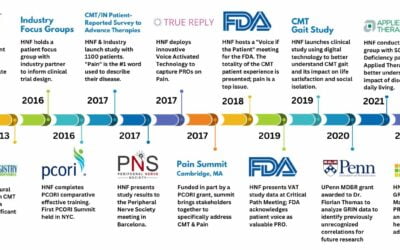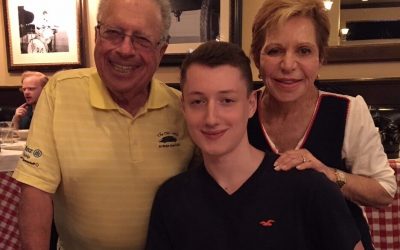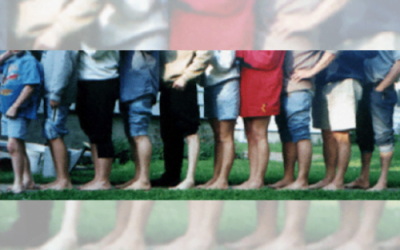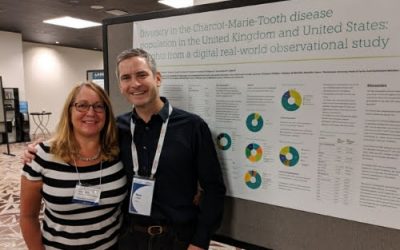Planning, shopping, wrapping, baking–December can be so exhausting. In the middle of all the holiday activity, HNF would like to stop and shout a huge “thank you” to our supporters! Please read the latest progress on HNF-funded research. Your dollars have been put right to work in two laboratories, one focused on CMT1 and the other on CMT2A.
And with your continued support, the Hereditary Neuropathy Foundation will be able to provide critical funding for a third research project in 2012, this one focused on the development of useful treatment right now.
Dr. Robert Chetlin of West Virginia University School of Medicine has proposed a research model in which the adaptive effects of exercise on transgenic rats will be evaluated. Transgenic rats are those that have been genetically modified to have CMT1A, the most common form of CMT. The rats will be regularly exercised on a specialized training device called a dynamometer. In conjunction with Dr. Brent Baker of the Centers for Disease Control – National Institutes for Occupational Safety and Health (CDC-NIOSH), Dr. Chetlin will analyze performance and clinical imagery (i.e. ultrasound) to see if these animals respond positively to the exercise stimulus. In addition, Dr. Chetlin and Dr. Baker will examine the proteins, genes, and other biomarkers of muscle and myelin (the fatty nerve covering affected in CMT) to determine, at the cellular level, the extent to which exercise produces positive changes. This information may eventually prove useful in determining how much exercise might benefit those persons with CMT who are still capable of exercising, as well as how hard patients should exercise, and eventually whether other interventions such as certain drugs may make exercise even more effective.
Part of what makes this study so exciting is the incredible partnerships that have been formed to make it possible. This is a multi-disciplinary, multi-centered study which includes basic and clinical researchers from the West Virginia University School of Medicine, The West Virginia University Animal Models and Imaging Facility, the CDC-NIOSH, and the Max Planck Institute for Experimental Medicine in Gottingen, Germany. This kind of broad, multi-disciplinary team is essential to obtaining an appropriate level of funding so this research can continue and build on positive results that are discovered. HNF is thrilled to be a part of this collaboration for it holds the potential to create real change for those living with CMT.
“HNF has provided critical resources to start up the research,” Dr. Chetlin told us. Additional funding has been applied for through the American Association of Electrodiagnostic and Neuromuscular Medicine (AANEM) Foundation for Research and Education.
Dr. Chetlin began the time consuming task of coordinating the study last year. “There are many questions that need to be answered whenever you are dealing with international agencies,” he explained, “including agreement as to how the information will be presented and who is given credit.” And we mustn’t forget the rats. After they arrive in the United States from the Max Planck Institute in Germany, there is a quarantine period before they can be released to West Virginia. Thanks to HNF’s funding, Dr. Chetlin and Dr. Baker expect to begin this research in late Summer or early Fall 2012.
HNF is committed to pursuing treatment and a cure for Charcot-Marie-Tooth disease, and we cannot fulfill this mission without your help. There is amazing research being done to help those living with CMT, and HNF will continue to direct your generous donations strategically toward research that holds the greatest promise. This holiday season please consider a tax-deductible contribution to HNF and help create real change for our family and friends living with CMT.









Hello!! I’m a younger who has Charcot Marie Tooth and I would like that it would have a cure for that disease soon. I have some problems to walk and I occured 6 years ago. So please go on in this way.
Best whises to you.
I too have cmt not sure what stage because I can’t afford the testing. Growing up it was always a challenge for me to run, I always complained my legs hurt. I am 26 and until just recently no Dr has given me an answer to what I have. I was thinking of trying to put a donation thing together so we can maybe in hopes and prayers find a cure who would be interested in it.
Hi Emma,
Please join the Patient Registry for Inherited Neuropathies http://www.hnf-cure.org/registry/. I would be happy to help you with a fundraiser in your town. Email me: [email protected]
I was found to have CMT2 in 1985. My biggest problem is the muscles above my knees are shrinking and they ache all the time. I need knee replacements, but even a small scratch on my legs take months to heal. My doctor said no way. I have to use 2 canes to walk.
hello, steve,
i’m writing as an american transplant to tasmania, australia, in 1987. getting an appointment with a neurologist is difficult, here. because of the problems with my hoarse voice i wonder if i have type 2 cmt.
i’m awaiting results of genetic testing for type 1, which is the only one they test for via the royal hobart hospital neurology department here in tasmania.
my doctor in hobart feels i have cmt1a especially after reading my mother’s medical history.
have probably had symptoms since i was a child but whatever “it” is, it’s progressing. pain is pretty much controlled by cymbalta, which was originally prescribed for major depressive disorder but now being used here in australia for cmt pain and diabetic neuropathy, etc.
do you, having type 2, have problems with your vocal cords?
i’m 67, by the way, and was a singer and musician among other things. so this disease progression is most irritating.
also, are your symptoms progressing?
thanks very much.
emilie
I am quite moved by all the testimonies of how long it took to get a diagnosis and how much pain some (many? most?) of us with CMT experience. At the time in the seventies when I had only a tentative diagnosis for about 4-5 years, I thought that was a long time. (The neurologists were confused by my nerve conduction study — I have CMT, type 2.) I generally have no pain, so I send my love and strength to those who do! The pain I have is when I fall from a standing or walking position or when I occasionally fall off my bicycle….! Best wishes to you all. Steve